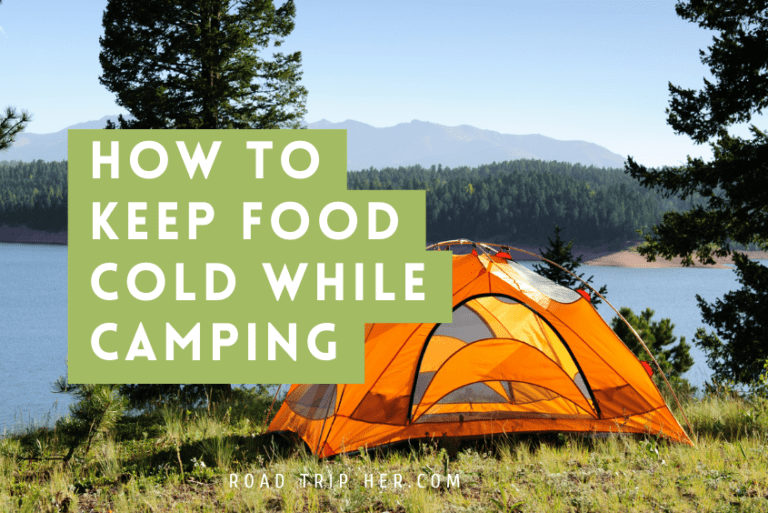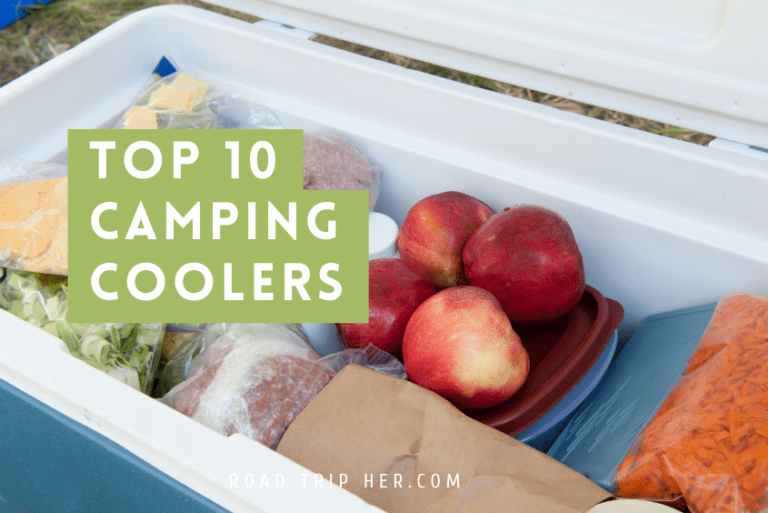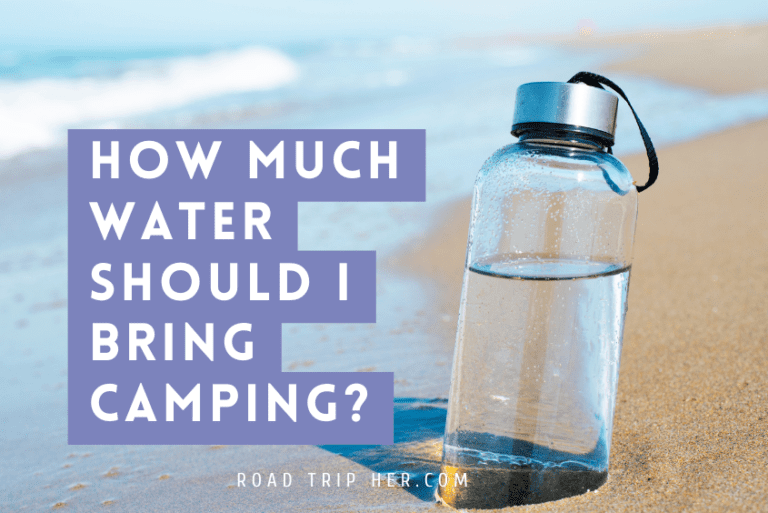Winter Car Camping: A Beginner’s Guide
While many people shy away from camping in cold temperatures, winter car camping offers a unique and rewarding experience. Imagine waking up to the peaceful serenity of a snowy landscape, sipping hot cocoa by a crackling campfire, and exploring picturesque trails without the crowds. With the right preparation and gear, winter car camping can be a safe and enjoyable activity for beginners.
In this beginner’s guide to winter car camping, we will cover everything you need to know to have a successful and comfortable winter camping trip. From understanding the concept of car camping in winter to choosing the right gear and setting up your campsite, we will guide you through each step of the process.
We will also provide tips on staying warm, ensuring safety, and enjoying fun activities during your winter car camping adventure. So, grab your gear, bundle up, and get ready to embark on an unforgettable winter camping experience.
Contents
Preparing for Your Winter Car Camping Adventure
Before embarking on a winter car camping adventure, it’s important to make sure you have the necessary gear and equipment to stay warm and comfortable in the cold weather.
This includes a good sleeping bag to keep you warm at night, an insulated sleeping pad to provide insulation from the cold ground, and a water bottle to stay hydrated throughout your trip.
Additionally, you’ll want to pack appropriate winter clothing and layering options to stay warm during the day and night. Proper preparation and gear are key to ensuring a successful and enjoyable winter car camping experience.
Checklist of Necessary Equipment
When preparing for a winter car camping trip, it’s important to have the right equipment to stay warm and comfortable in the cold weather. Here is a checklist of necessary equipment:
- Good sleeping bag: Choose a sleeping bag with a temperature rating suitable for the coldest temperatures you expect to encounter. Look for a bag that is insulated and designed for winter camping.
- Insulated sleeping pad: An insulated sleeping pad will provide extra insulation from the cold ground and help keep you warm while you sleep.
- Hot water bottle: A hot water bottle can be filled with boiling water and placed in your sleeping bag to provide additional warmth during the night.
- Winter clothing: Pack warm and moisture-wicking clothing, including base layers, insulating layers, and a waterproof and windproof outer layer. Don’t forget hats, gloves, and socks to keep your extremities warm.
- Camping stove: A camping stove will allow you to cook warm meals and hot drinks during your trip.
- Headlamp: A headlamp is essential for navigating in the dark and can be useful for setting up camp or going to the bathroom at night.
By ensuring you have these essential items, you’ll be well-prepared for a comfortable and enjoyable winter car camping experience.
Choosing the Right Vehicle for Winter Camping
Choosing the right vehicle for winter camping is crucial for a safe and comfortable trip. Here are a few factors to consider:
- Four-wheel drive: Having a vehicle with four-wheel drive can provide better traction on snowy and icy roads, making it easier to navigate through winter conditions. This is especially important if you plan to camp in remote or off-road areas.
- Snow tires: Investing in snow tires can greatly improve your vehicle’s grip on snowy and icy surfaces. Snow tires are designed with deeper treads and softer rubber compounds to provide better traction in winter conditions.
- Car campers: If you’re planning to sleep in your car during winter camping trips, consider the size and layout of your vehicle. SUVs, vans, and trucks with spacious interiors can provide more comfort and storage space for gear and sleeping arrangements.
- Insulation: Some car campers choose to insulate their vehicles to further protect against the cold. This can involve adding insulation panels to windows, using reflective insulation covers, and insulating the interior with foam or carpeting.
By choosing a vehicle with the right features and taking steps to insulate and prepare it for winter conditions, you can ensure a more comfortable and enjoyable winter car camping experience.
Importance of Vehicle Maintenance for Winter Trips
When embarking on a winter car camping trip, it’s important to prioritize vehicle maintenance and preparedness. Here are a few reasons why:
- Backup plan: Winter weather can be unpredictable, so it’s important to have a backup plan in case conditions become too severe or unsafe for camping. Research alternative campgrounds or nearby accommodations that you can quickly switch to if needed.
- Vehicle check-up: Before setting out on a winter trip, take your vehicle for a thorough check-up. Ensure that the tires are properly inflated, the battery is charged, the brakes are in good condition, and all fluids are topped up. It’s also a good idea to have an oil change and check the heater and defroster for proper functioning.
- Emergency kit: Pack an emergency kit in your vehicle with essentials like a first aid kit, jumper cables, a flashlight, extra blankets, snacks, and water. This kit can be a lifesaver in case of unexpected breakdowns or emergencies.
By prioritizing vehicle maintenance and preparedness, you can have peace of mind and avoid potential issues that could dampen your winter car camping adventure.
Step-by-step Guide to Winter Car Camping
Embarking on a winter car camping trip requires careful planning and preparation. Here is a step-by-step guide to help you navigate the process:
Step 1: Planning Your Winter Car Camping Trip
The first step in planning a winter car camping trip is to consider the weather conditions and forecast for your chosen destination. Research the average temperatures, snowfall, and any possible weather patterns that may affect your camping experience. It’s important to be aware of any potential hazards or extreme weather conditions that may arise during your trip.
Next, select a campground or area that is suitable for winter camping. Look for campgrounds that offer amenities like bathrooms and access to trails or other recreational activities. Consider the proximity to nearby towns or emergency services in case of any unforeseen circumstances.
Having a backup plan is essential for winter camping. In case the weather becomes too severe or the campsite is inaccessible, research alternative campgrounds or nearby accommodations that you can switch to quickly and easily. This will ensure that you have options in case your original plan needs to be adjusted.
By taking the time to plan and prepare for your winter car camping trip, you can have a safe and enjoyable experience in the great outdoors.
Step 2: Preparing Your Car for Winter Conditions
One of the most important steps in preparing for a winter car camping trip is to ensure that your car is ready for the cold weather conditions. Here are some key aspects to consider:
- Insulate your car windows: Use a roll of Reflectix or a similar reflective insulation material to cover your car windows. This will help to trap heat inside the car and prevent drafts. Reflectix is a great option as it is lightweight, easy to install, and acts as a natural insulator.
- Utilize natural insulation: In addition to insulating your car windows, consider using natural insulation materials to further protect against the cold. For example, you can place wool blankets or sleeping bags against the windows to provide additional insulation and keep the cold air out.
- Seal any gaps or cracks: Check your car for any gaps or cracks where cold air can enter. Use weather stripping or insulation tape to seal these areas and prevent drafts.
- Consider using a car heater: If you have access to a power source, consider using a car heater to provide additional warmth inside your vehicle. There are portable heaters available that are safe to use and can help to maintain a comfortable temperature during your camping trip.
By taking these steps to prepare your car for winter conditions, you can ensure a warmer and more comfortable experience during your car camping adventure.
Step 3: Packing Efficiently and Strategically
When packing for a winter car camping trip, it’s important to pack efficiently and strategically to make the most of the available space in your vehicle. Here are some tips for packing efficiently:
- Make a packing list: Start by making a list of all the essential items you will need for your trip. This will help you stay organized and ensure that you don’t forget anything important.
- Utilize space wisely: Use compression sacks or vacuum-sealed bags to pack bulky items like clothing or bedding. This will help to minimize the amount of space they take up in your vehicle. Additionally, pack items in waterproof bags or containers to keep them dry and protected.
- Pack dry gear separately: Separate your dry gear from your wet gear to avoid moisture and condensation. Place wet items in waterproof bags or containers to prevent them from dampening your other belongings.
By packing efficiently and strategically, you can maximize the space in your vehicle and ensure that you have everything you need for a comfortable winter car camping trip.
Step 4: Setting Up Your Car for Sleep Comfort
Setting up your car for sleep comfort is essential for a restful night’s sleep during your winter car camping trip. Here are some key steps to follow:
- Choose a warm and comfortable sleeping bag: Select a sleeping bag with a temperature rating suitable for the coldest temperatures you expect to encounter. Consider using a sleeping bag liner for added warmth and comfort.
- Use an air mattress or sleeping pad: Place an air mattress or a sleeping pad on the floor of your car to provide insulation from the cold ground. This will help to keep you warm and comfortable while you sleep.
- Add extra layers of insulation: Layer a wool blanket on top of your sleeping bag or between you and the air mattress for additional insulation. Wool is a natural insulator that will help to trap heat and keep you warm throughout the night.
By following these steps, you can create a cozy and comfortable sleeping environment in your car for a good night’s sleep during your winter car camping trip.
Step 5: Managing Food and Hygiene While Camping
Managing food and hygiene are important aspects of a winter car camping trip. Here are some tips to help you stay nourished and maintain good hygiene:
- Plan and pack meals: Plan and pack meals that are easy to cook and provide warmth and nutrition. Consider foods that can be cooked on a camping stove or portable grill, like soups, stews, and hot drinks.
- Boil water: Boil water before using it for cooking or drinking to ensure that it is safe and free from bacteria. Use a camping stove or portable grill to heat the water to a rolling boil.
- Use a pee bottle: Cold temperatures and the inconvenience of leaving your warm sleeping bag in the middle of the night make a pee bottle especially useful during winter car camping. Use a wide-mouthed, leakproof bottle for easy and mess-free disposal.
- Practice good hygiene: Wash your hands regularly with soap and water, or use hand sanitizer if water is not available. Dispose of waste properly and follow Leave No Trace principles to minimize your impact on the environment.
By following these practices, you can ensure that you stay nourished and maintain good hygiene during your winter car camping adventure.
Ensuring Warmth During Winter Car Camping
Staying warm is crucial during winter car camping. Here are some tips to ensure warmth:
- Maintain body temperature: Dress in layers and wear warm, moisture-wicking clothing to help regulate body temperature.
- Use a warm sleeping bag: Invest in a high-quality, warm sleeping bag with a temperature rating suitable for the coldest temperatures you expect to encounter.
- Consider an electric blanket: If you have access to a portable power source, an electric blanket can provide additional warmth during the night.
By following these tips, you can ensure a comfortable and warm winter car camping experience.
Insulation Techniques for Your Car
Insulating your car is an important step in staying warm during winter car camping. Here are some insulation techniques to consider:
- Address heat loss: Identify areas where heat can escape from your car, such as windows, doors, and gaps. Use insulation materials like Reflectix or foam insulation to cover and seal these areas, reducing heat loss.
- Insulate windows: Use reflective insulation panels or covers on your windows to reflect heat back into the car and prevent drafts. This can help maintain a warmer interior temperature.
- Use natural insulators: Wool blankets or sleeping bags can be placed against windows or used as curtains to provide additional insulation and block out cold air.
Insulating your car is a great way to retain heat and create a more comfortable camping environment during winter car trips.
Investing in Quality Sleeping Bags and Clothing
Investing in high-quality sleeping bags and clothing is essential for staying warm during winter car camping. Here are some considerations:
- Choose a sleeping bag with a temperature rating suitable for the coldest temperatures you expect to encounter. Look for bags that are well-insulated and designed for winter camping.
- Consider using a sleeping bag liner for added warmth and comfort. Liners made of materials like merino wool can provide additional insulation.
- Invest in high-quality winter clothing made from materials like merino wool or synthetic fabrics that wick moisture away from the body and provide insulation.
By investing in quality sleeping bags and clothing, you can ensure that you stay warm and comfortable during your winter car camping trips.
Safe Ways to Heat Up Your Car
Heating your car safely is important during winter car camping. Here are some safe ways to heat up your car:
- Portable propane heater: Consider using a portable propane heater designed for indoor use. Follow the manufacturer’s instructions and ensure proper ventilation to prevent carbon monoxide buildup.
- Electric heater: If you have access to a portable power source, an electric heater can be a safe option for heating your car. Make sure to use a heater specifically designed for indoor use and follow all safety guidelines.
- Safe heating practices: Always follow safety guidelines and precautions when using any type of heater in your car. Make sure there is proper ventilation and never leave a heater unattended or operating while you sleep.
By following these safe heating practices, you can stay warm and cozy inside your car during winter car camping trips.
Winter Car Camping Safety Tips
Staying safe during winter car camping is crucial. Here are some safety tips to keep in mind:
- Take safety precautions: Be prepared for winter conditions by packing appropriate clothing, gear, and emergency supplies.
- Beware of carbon monoxide: Ensure proper ventilation when using heaters or cooking devices to prevent carbon monoxide buildup inside your car.
- Know what to do in case of emergency: Have emergency contacts and a plan in place for emergency situations, including medical emergencies or vehicle breakdowns.
By following these safety tips, you can have a safe and enjoyable winter car camping experience.
How to Handle Snow and Ice
Handling snow and ice is important during winter car camping. Here are some tips to consider:
- Use an ice scraper: Keep an ice scraper in your car to remove ice and snow from your windows and windshield before driving.
- Consider using snow chains: If you plan to drive in areas with heavy snow or icy conditions, consider using snow chains for added traction and control.
- Practice safe driving: Drive slowly and cautiously in winter conditions, allowing for extra stopping distance. Avoid sudden movements or braking, and give yourself plenty of time to reach your destination.
By following these tips, you can navigate snowy and icy conditions safely during your winter car camping trips.
Carbon Monoxide Awareness
Carbon monoxide awareness is crucial during winter car camping. Here are some tips to stay safe:
- Prevent carbon monoxide poisoning: Make sure your car is properly ventilated when using heaters or cooking devices to avoid carbon monoxide buildup. Keep windows cracked open to allow fresh air to circulate.
- Be aware of car heater safety: Follow the manufacturer’s instructions and safety guidelines when using a car heater. Avoid leaving the heater unattended or running it while you sleep.
By being aware of carbon monoxide risks and practicing proper ventilation and heater safety, you can minimize the risk of carbon monoxide poisoning during your winter car camping trips.
What to Do in Case of an Emergency
Knowing what to do in case of an emergency is important during winter car camping. Here are some steps to consider:
- Have emergency contacts: Carry a list of emergency contacts, including local authorities and roadside assistance services.
- Pack a first aid kit: Make sure to have a well-stocked first aid kit that includes essentials like bandages, antiseptic ointment, and pain relievers.
- Develop an emergency plan: Create a plan for emergency situations, including how to assess and treat injuries, how to communicate for help, and how to safely evacuate if necessary.
By being prepared and having a plan in place, you can respond effectively to emergency situations and ensure the safety of yourself and your fellow campers.
Enjoying Your Winter Car Camping Experience
Winter car camping offers unique opportunities for fun and memorable experiences. Here are some ways to enjoy your winter car camping trips:
- Engage in fun winter activities: Take advantage of the snowy setting by participating in activities like snowshoeing, winter hiking, or cross-country skiing.
- Explore national parks or other winter destinations: Winter can be a great time to visit national parks, as they are often less crowded and offer stunning winter landscapes.
- Capture your winter memories: Bring a camera or journal to document your winter car camping experiences and capture the beauty of the cold climates.
By embracing the unique opportunities of winter car camping, you can create lasting memories and enjoy the beauty of the outdoors in cold weather.
Fun Winter Activities While Car Camping
Winter car camping provides a great opportunity to engage in fun winter activities. Here are some activities to consider:
- Snowshoeing: Explore the snowy trails surrounding your campsite by strapping on a pair of snowshoes. Snowshoeing is a great way to enjoy the winter landscape and access areas that may be inaccessible by foot.
- Winter hiking: Lace up your boots and hit the winter trails for a scenic hike. Winter hiking can offer a unique perspective on familiar trails and provide a peaceful and serene outdoor experience.
- Visit national parks: Winter is a great time to visit national parks, as they are often less crowded and offer stunning winter landscapes. Many parks offer groomed trails for cross-country skiing or snowshoeing.
By engaging in these activities, you can make the most of your winter car camping experience and enjoy the beauty of the winter season.
Capturing Your Winter Car Camping Memories
Capturing your winter car camping memories is a great way to preserve the beauty and excitement of your outdoor adventures. Here are some tips for capturing and documenting your experiences:
- Photography tips: Bring a camera or smartphone with a good camera to capture the stunning winter landscapes and memorable moments. Experiment with different angles, lighting, and compositions to create unique and compelling photos.
- Journaling: Keep a journal to record your thoughts, feelings, and experiences during your winter car camping trip. Reflecting on your adventures and writing down your memories can be a meaningful way to document your trip.
- Capture moments: Take the time to fully immerse yourself in the experience and capture the small moments that make your winter car camping trip special. Whether it’s a beautiful sunrise, a cozy campfire, or a group gathering, these moments can be cherished for years to come.
By using photography and journaling to capture your winter car camping memories, you can create a lasting record of your outdoor adventures and relive those moments in the future.
Conclusion
Winter car camping is an exciting adventure that allows you to experience the beauty of nature while staying cozy in your car. By following the steps outlined in this guide, you can ensure a safe and enjoyable winter camping trip.
Frequently Asked Questions
Is It Safe to Car Camp in Winter?
Yes, it is safe to car camp in winter as long as proper safety measures are taken. It’s important to be prepared for the weather conditions, have the right equipment, follow safe practices, and conduct a risk assessment before embarking on a winter car camping trip.
How Do I Stay Warm While Car Camping in Winter?
To stay warm while car camping in winter, use an insulated sleeping pad, a warm sleeping bag, and layer your clothing for added warmth. Utilize body heat, layer your clothes, and consider using a car heater if available.
What are Some Essential Gears for Winter Car Camping?
Essential gear for winter car camping includes a warm sleeping bag, a water bottle for staying hydrated, a hot water bottle for added warmth, appropriate camping gear, and clothing suitable for cold temperatures.







